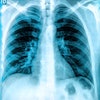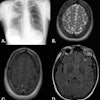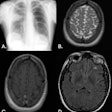Even among individuals with symptoms suggesting a higher risk of colorectal polyps and cancer, virtual colonoscopy screening is enough to prevent most of them from having to undergo invasive colonoscopy. Researchers from Venlo, Netherlands, said that referrals to optical colonoscopy after VC (also known as CT colonography or CTC) remained low even among the oldest symptomatic patients in the group's recent study.
"In the Netherlands, the general practitioner [GP] -- what you call primary care providers in the U.S. -- is the person who sees every patient first" -- and consequently does the referrals for colorectal cancer screening, said Dr. Jelle Peulen from VieCuri Medical Center in Venlo. But although GPs may refer patients for invasive colonoscopy, they generally cannot do the same with virtual colonoscopy, which is not reimbursed for most cases as in the U.S., Peulen said at the 2009 International Symposium on Virtual Colonoscopy.
"When virtual colonoscopy became available in our hospital, we wanted to make it available for [referral by] GPs, especially in symptomatic patients, to exclude colorectal carcinoma as an alternative to optical colonoscopy, especially average-risk patients," Peulen explained. "High-risk patients and patients with suspected inflammatory diseases would [still] primarily be sent to optical colonoscopy," he said.
Thus, an exception was made, allowing GPs to refer such low- to intermediate-risk symptomatic patients for virtual colonoscopy, rather than the less effective double-contrast barium enema, as an alternative to invasive colonoscopy.
"The aim of the study was to determine in how many patients invasive colonoscopy could be spared based on CTC results," he said. Between 2006 and 2009, a total of 473 symptomatic patients (173 men, 300 women; mean age, 61; range, 21-91 years) were referred by GPs for virtual colonoscopy at the center.
All underwent a cathartic bowel preparation consisting of a 48-hour low-fiber diet combined with cathartic agents magnesium citrate and bisacodyl the day before VC. Barium with meals was given for tagging prior.
Automated CO2 insufflation (ProtoCO2l, Bracco Diagnostics, Princeton, NJ) was performed before prone and supine imaging on a 64-detector-row scanner (Brilliance 64, Philips Healthcare, Andover, MA). One of two CTC-trained radiologists interpreted all images using primary 3D visualization (Extended Brilliance Workspace 3.0, Philips Healthcare) with results classified on the C-RADS system, with the extracolonic findings category modified slightly in consideration of the large numbers of older patients.
"Most patients were referred for abdominal pain or a change in bowel habits," Peulen said. Among the first 465 participants in the study, 52 were referred for rectal bleeding, 132 for a change in bowel habits, 22 for constipation, 165 for abdominal pain, 12 for anemia, 24 for positive family history of colorectal disease, 27 for incomplete colonoscopy, six who refused colonoscopy, and 25 who were referred for other indications, according to Peulen.
According to the results, "in about 84% of patients, there was no lesion in the colon, only benign lesions such as diverticulosis," Peulen said. In all, 40 patients (8.5%) had 6- to 9-mm lesions, 21 patients (4.4%) had a clinically significant finding (polyp ≥ 10 mm or ≥ 3 polyps 6-9 mm), and 15 patients (3.2%) had masses representing a likely colorectal carcinoma, he said.
Among the first 465 patients, whose statistics were detailed in an abstract accompanying the presentation, diverticulosis was diagnosed in 31.6%, possibly explaining the patient's symptoms in 88 cases. In 17 of the 465 cases (3.7%), there was a potentially significant extracolonic finding requiring workup. And 54 patients had a potentially important extracolonic finding, possibly explaining the symptoms that led to the study in 24 (5.2%) patients.
"We reported these findings according to the C-RADS classifications back to the GP, and the GP decided who to send and who not to send for optical colonoscopy," Peulen said.
All patients with masses and large polyps (or multiple 6- to 9-mm lesions) were referred for optical colonoscopy, he said. The general practitioners could choose optical colonoscopy at their discretion for patients with negative findings at VC or one to two diminutive lesions, sending 15 such patients to optical colonoscopy during the study, Peulen said.
"Even if we include those 15 patients, only 62 or about 13% of our patients underwent optical colonoscopy, so 87% [n = 411] were spared optical colonoscopy," he said.
Stratifying the patients by age, no large polyps or masses were found in any patient younger than 50 years of age. Progressively more lesions were detected among the older patients, he said.
"But even in the oldest patients, who are also at the highest risk of complications from optical colonoscopy, we found about a 20% indication rate for optical colonoscopy in those patients -- so, in other words, four-fifths of the oldest patients can still be spared optical colonoscopy," Peulen said.
Potentially serious extracolonic findings were noted in approximately 85 patients, he said. Organ cancers and other findings were detected at follow-up; however, a full analysis of how many patients required follow-up exams was not yet available.
Even in symptomatic patients, "the need for optical colonoscopy was obviated in the large majority of patients -- in the end, only 13% underwent both exams, so 87% were spared optical colonoscopy," Peulen concluded. "VC is a very useful exam as an alternative to optical colonoscopy, and can be used by general practitioners to exclude colorectal carcinoma and low-risk lesions."
By Eric Barnes
AuntMinnie.com staff writer
February 24, 2010
Related Reading
VC screening effective in Medicare-age screening cohort, January 27, 2010
VC screening maintains performance in Medicare population, November 9, 2009
Meta-analysis reveals paucity of advanced neoplasia in small polyps, November 2, 2009
Risks from colonoscopy in elderly increase with age, comorbidities, July 13, 2009
VC with automated insufflation effective in stenosing cancer, March 24, 2008
Copyright © 2010 AuntMinnie.com

















